Emails – Letters – Tweets – Facebook – Instagram – Kit questions
Email us at inbox@skyatnightmagazine.com
MESSAGE OF THE MONTH
Off to a great start
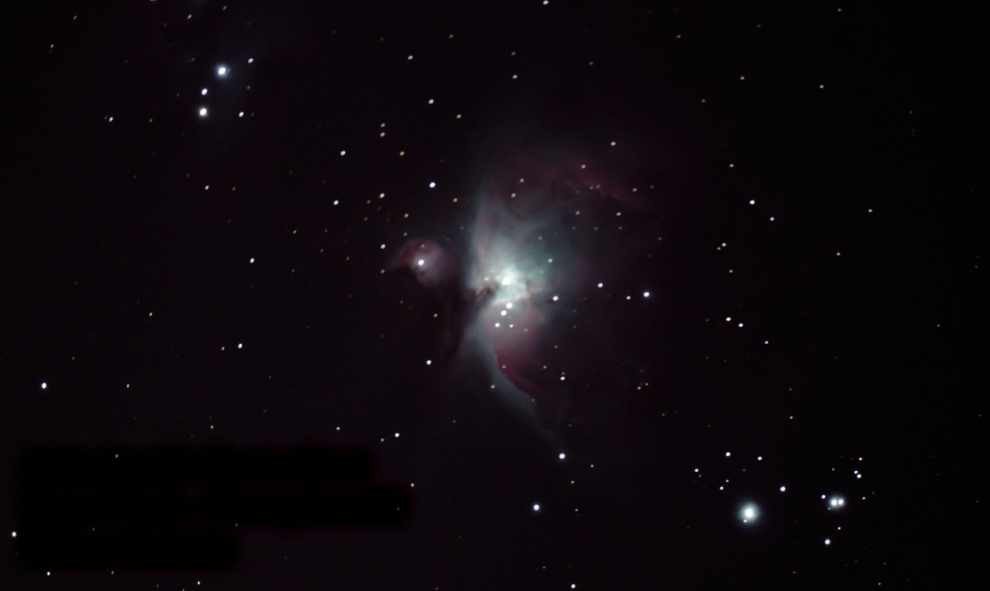
I just wanted to share with you my first deep-sky astrophoto, which I took by following the excellent guide to photographing the Orion Nebula with a DSLR camera on your website, written by Pete Lawrence and David Tolliday (bit.ly/M42DSLR). The exposure time and ISO settings advice was very useful. I used a WideSky 80S ED refractor telescope on a Sky-Watcher Star Adventurer GTi mount, with a Canon EOS 2000D DSLR camera and the images were stacked in DeepSkyStacker. As I have zero knowledge of Photoshop, I just messed around with it until I got an image I was happy with! Astrophotography seemed daunting to me, but I put the Orion Nebula at the top of my list of goals for this year. To capture it in my first ‘proper’ attempt means I’ll be out every clear night snapping away! Please pass my thanks on to Pete and David.
Congratulations on ticking off one of your New Year resolutions so early in the year, Paul! Keep an eye on the magazine and website for more imaging advice. – Ed.

The ‘Message of the Month’ writer will receive a bundle of two top titles courtesy of astronomy publisher Philip’s: Nigel Henbest’s Stargazing 2023 and Robin Scagell’s Guide to the Northern Constellations
Winner’s details will be passed on to Octopus Publishing to fulfil the prize
Glaze of glory
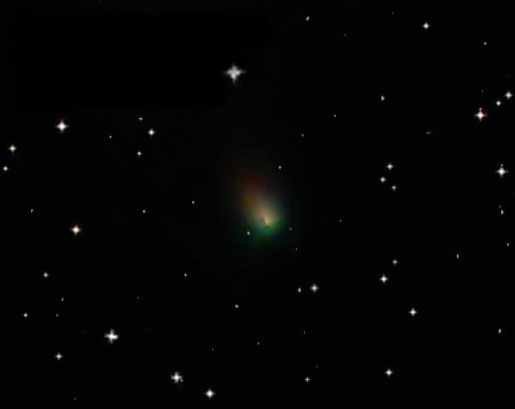
George Alcock (1912–2000) was the finder of five comets and five novae and has been described as the greatest visual astronomer who ever lived under cloudy UK skies. Comet IRAS–Araki–Alcock was the brightest comet he had a share in discovering, and the fact he did so with hand-held binoculars, from indoors looking through a window, just adds to his legendary status. George’s final discovery, Nova V838 Herculis, was made on 25 March 1991 when he was 78 years old, and he was, once again, observing from indoors through a double-glazed window using 10×50 binoculars. I’m now 76 and, inspired by George, have been imaging objects for several years – again, like George, from indoors through double glazed windows. So it seems appropriate that I imaged comet C/2022 E3 ZTF in this way. There is much light pollution here in the direction of the rising comet, so the small loss of light through the glazing is not that significant.
Scope from scrap
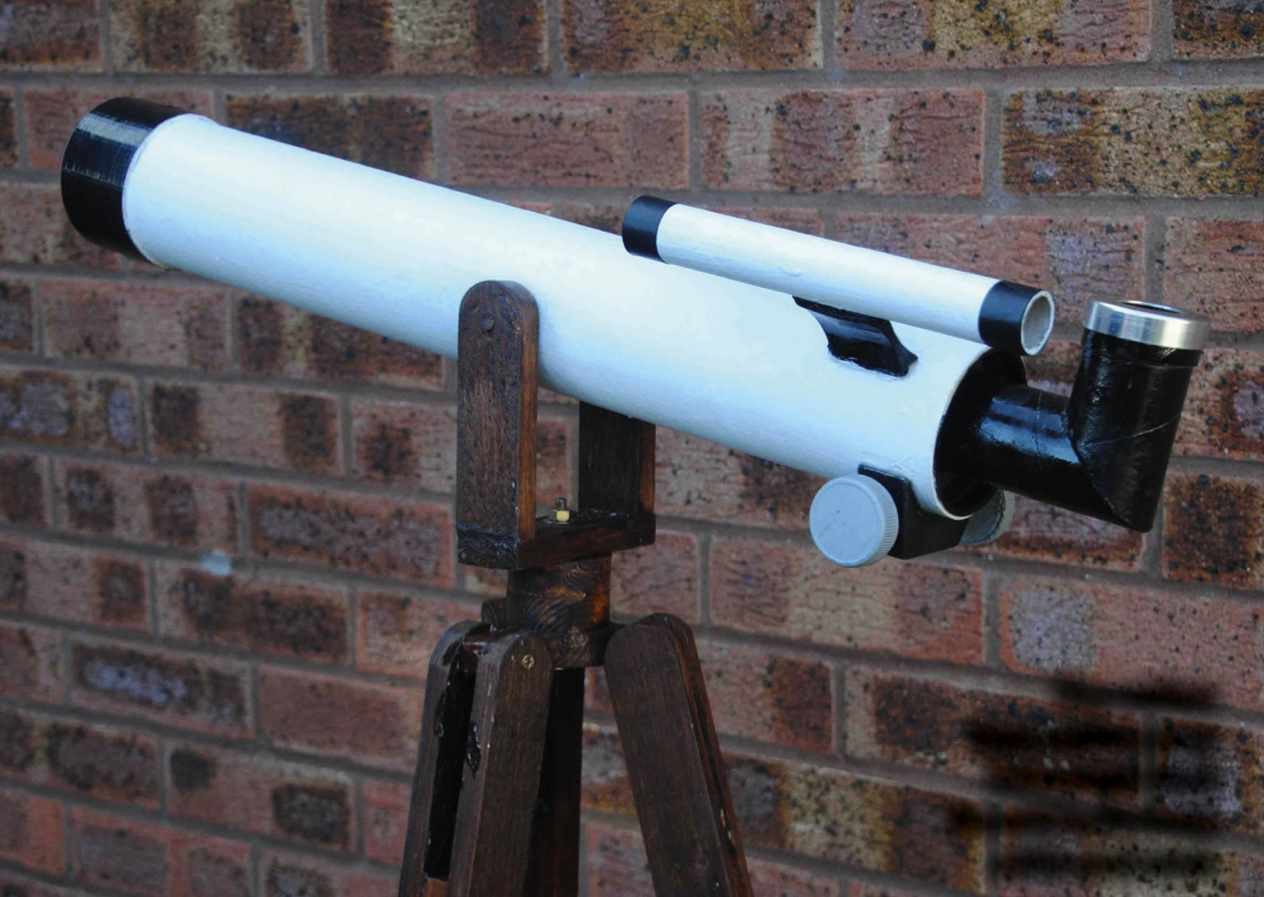
As well as my astronomy activities, I’m a member of an amateur opera society here in the South West, the Somerset Opera. We’ve just finished a touring production, a modern-day version of Menotti’s Amahl and the Night Visitors. One stage prop we needed for this was a telescope, as in one scene Amahl scans the heavens, obviously looking at the star of Bethlehem! For a few milliseconds I considered lending my own apo refractor, but common sense soon prevailed and I made one instead. The tube was the centre of a roll of clingfilm, the right-angled draw tube toilet roll cores. For the focuser knobs I used screw-on caps from fruit juice bottles and a plank I found in my workshop, sawn into strips, became the tripod and altaz mount. I made the 2-inch eyepiece out of the trim from a broken door handle, the dew shield from layers of black duct tape, and the finderscope out of a plastic broom handle. With a lick of white paint and woodstain, from the audience’s view I think it looked great, and there was no risk of very expensive damage to my kit!
Name game
I saw the comet E3 ZTF for the first time through the light pollution last night, using just a pair of 8×60 astronomical binoculars and averted vision. I think a comet as beautiful as this deserves a name. As it is green and well-liked, after some thought I have named it ‘Shrek’ after the well-loved cartoon character. I have yet to contact the Zwicky Transient Facility about this.
Sun and games
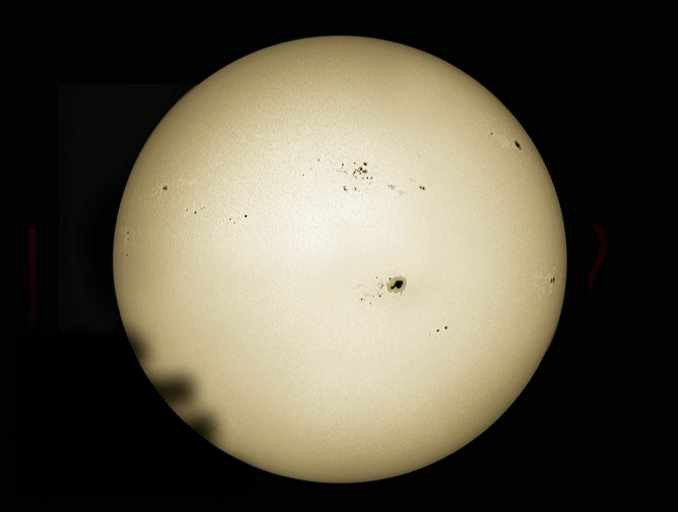
Solar cycle 25 has coincided with my early retirement from teaching. So now when the Sun shines I am ready to take advantage of the good weather. For a change I took this white-light image of the Sun using a Sky-Watcher Evostar 80ED refractor, a white-light filter and a ZWO ASI224MC astro camera. Over the last year, the Sun has certainly picked up its activity and I hope to document as much of the action as I can. Sol Invictus!
Measuring up
When distances between heavenly bodies, such as between Earth and the Moon, are stated, is this distance from centre to centre or surface to surface?
Generally most distances are quoted centre to centre since the size of planets and other bodies is tiny compared with distances between them. – Ed.
ON FACEBOOK
WE ASKED: Why is Venus known as the Morning or Evening Star?
Andrew Ladzinski Because it is an inner planet from us. Its orbit doesn’t go out far enough to make it visible at other times.
Ahmad Mohammed Because when it is visible, it is either in the eastern morning sky or the western evening sky.
Everton Johnson The morning star and evening star is not a star, it’s a planet.
Gene Rodriguez Because it is so bright and it’s a beautiful planet too!
Linda Stubbs At her brightest, when she is most red, she is a lovely sight.
Janice Burdett One thing I loved in school was our planets. I have a passion for Venus and all planets.
Jack Eastman In 2020 I heard a boy on the phone when I was walking the dog. He said he saw a wishing star early evening. It was way too bright to be a star. I told the dog it was Venus. It will not work to wish on a planet.
George Pepperrell I observed the transit of Venus back in 2005. A few years later it was cloudy so I couldn’t see it. It won’t do that again for another 150 years.
Tweet
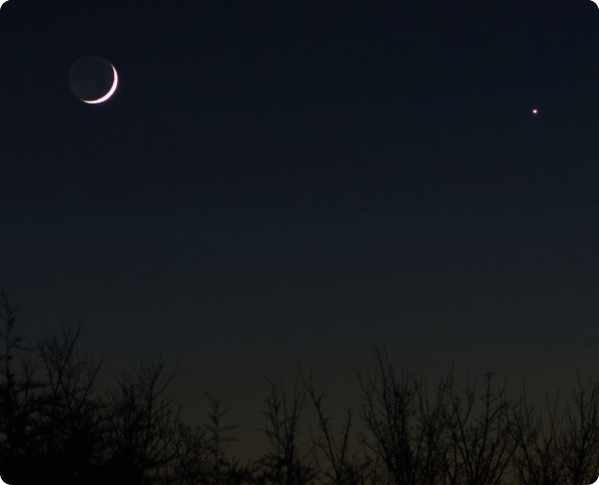
Tim Burgess @TimBurgess • 23 January
The #Moon, #Venus and #Saturn in conjunction this evening. Super clear skies with some lovely sunset hues there too. #astro #astrophotography #planets #conjunction @VirtualAstro @skyatnightmag
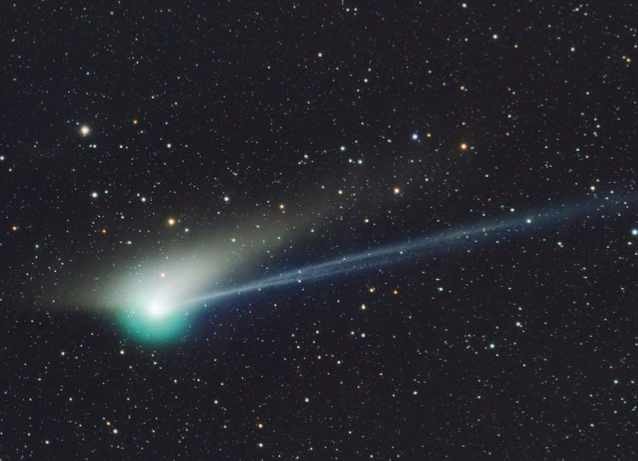
timwhite111 • 24 January
Comet C/2022 E3 ZTF imaged with ZWO ASI2600MC and RedCat 51 #redcat51 #comet #zwo #deepspace #astronomy #nasa #astrophotography #greencomet #space #stargazing @bbcskyatnightmag @yourastronomy @zwoasi
SOCIETY IN FOCUS
Formed in 1881, Liverpool Astronomical Society is one of the oldest in the world. Today, it continues to promote the science of amateur astronomy as it did over 140 years ago.
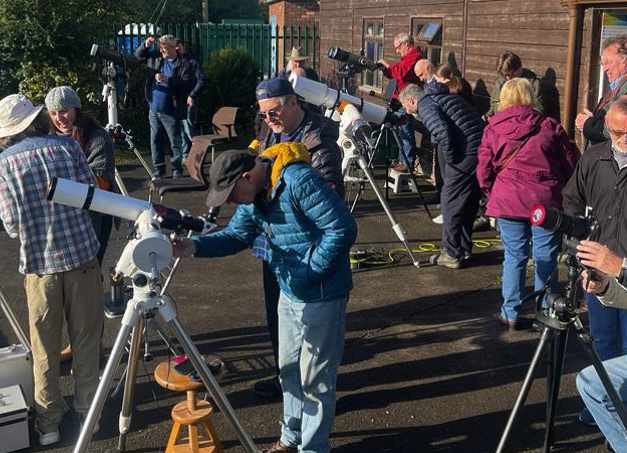
LAS struggled through lockdown, yet we kept going with virtual meetings and talks from guest speakers as far away as Canada and the USA. All that now behind us, members embraced the 2022–23 season with local outreach events and the return of monthly face-to-face meetings at the Quaker Meeting House, School Lane, Liverpool.
In March 2023 our very own Rob Johnson will be talking about astrophotography, and in April Dr Mark Norris from the University of Central Lancashire will discuss cosmology. The reopening of our Pex Hill Observatory has been very popular, enabling visits from Cubs and Scouts groups, and the restart of our Young Astronomers Club.
Our big recent event was ‘When NASA Went to the Moon’, at Liverpool’s Central Library and World Museum, celebrating the 50th anniversary of Apollo 17. We had fascinating talks, memorabilia displays and experts on hand. Hundreds of visitors came, despite the snow. It’s safe to say our society is thriving again and, with almost 200 members and plenty of newcomers, we’re in good shape for the future.
SCOPE DOCTOR
Our equipment specialist, Steve Richards, cures your optical ailments and technical maladies
Email your queries to scopedoctor@skyatnightmagazine.com
Is there a way to attach large astronomical binoculars, such as those made by APM, to an equatorial mount?
Large binoculars like those manufactured by APM can physically be attached to an equatorial mount by first attaching a dovetail bar to the binocular’s tripod adaptor using a ¼–20 bolt from the underside of the bar, and then attaching the bar to the dovetail clamp on the equatorial mount.
However, this would absolutely not be recommended. An equatorial mount moves in an arc as it tracks objects across the sky, so the binoculars would spend most of their time at an awkward angle and at varying heights from the ground. The eyepieces would be positioned anywhere from vertically above one another to horizontal, depending on which part of the sky you are observing, making the binoculars pretty much unusable.
An altaz mount, on the other hand, moves only left–right and up–down, so the binoculars’ eyepieces would remain horizontal and placed above the centre of the mount at all times, making this the mount of choice. Alternatively, consider a parallelogram mount designed specifically for binoculars.
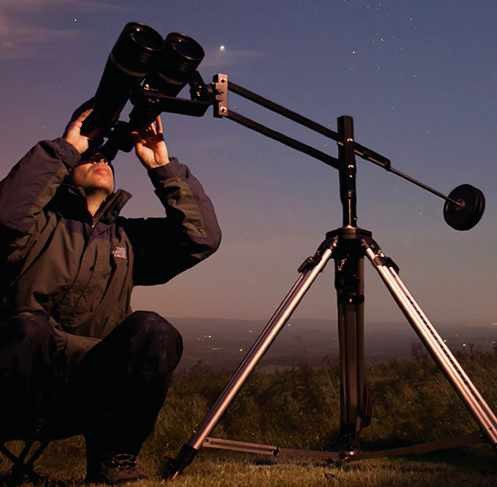
Steve’s top tip
What is an OTA?
Like so many pursuits, especially those involving science and specialised equipment, astronomy has its own language and abbreviations, which can be confusing for beginners.
A frequently used abbreviation is ‘OTA’. It stands for Optical Tube Assembly and refers to the main part of a telescope that supports the mirrors in a reflector telescope like a Newtonian, Schmidt-Cassegrain telescope (SCT), Maksutov (Mak) or Ritchey-Chrétien (RC); or the lens elements in a refractor. The focuser and accessories like finderscopes, red dot finders and dovetail bars or tube rings also attach to the OTA.
Steve Richards is a keen astro imager and an astronomy equipment expert